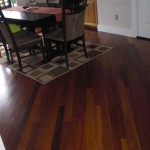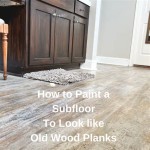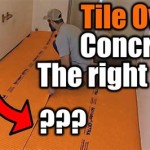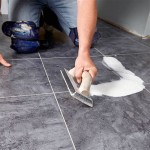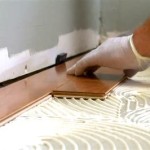Vinyl Wood Plank Flooring: An In-Depth Review
Vinyl wood plank flooring has risen as a top choice for flooring enthusiasts seeking the beauty and warmth of hardwood without the hefty price tag and maintenance concerns. This article delves into the essential aspects of vinyl wood plank flooring, providing a comprehensive review.
What is Vinyl Wood Plank Flooring?
Vinyl wood plank flooring is a type of resilient flooring made from durable polyvinyl chloride (PVC) material. It is designed to mimic the look and texture of genuine hardwood, offering a wide range of realistic options.
Composition and Construction
Vinyl wood plank flooring typically consists of several layers. The top layer is a transparent wear layer that protects the flooring from scratches and wear. Beneath it lies the decorative layer, which provides the realistic wood-like appearance. A core layer made of PVC or a composite material provides stability and strength. Finally, a moisture barrier layer at the bottom prevents moisture penetration.
Advantages of Vinyl Wood Plank Flooring
Vinyl wood plank flooring offers numerous advantages over traditional hardwood and other flooring options:
- Durability: Resistant to scratches, dents, and wear, making it suitable for high-traffic areas.
- Water Resistance: Ideal for kitchens, bathrooms, and other moisture-prone areas.
- Affordability: More cost-effective than hardwood flooring and requires less maintenance.
- Easy Installation: Typically a DIY-friendly project that can be installed with glue, nails, or a floating system.
- Comfort: Warmer and more comfortable underfoot than ceramic or porcelain tile.
Disadvantages of Vinyl Wood Plank Flooring
While vinyl wood plank flooring has many benefits, it also has some drawbacks:
- Can Be Cold: Vinyl flooring can feel cold to the touch, especially in winter.
- Not as Durable as Hardwood: Although resilient, it is not as durable as genuine hardwood and can be damaged by sharp objects.
- Off-Gassing: Some vinyl flooring can release chemicals into the air, known as off-gassing. Choose low or no-VOC (Volatile Organic Compounds) vinyl to mitigate this issue.
Types of Vinyl Wood Plank Flooring
Vinyl wood plank flooring comes in various styles and types, including:
- Solid Vinyl Plank: A single, thick plank that is installed directly over the subfloor.
- Engineered Vinyl Plank: A multi-layer plank with a rigid core, providing enhanced stability and water resistance.
- Luxury Vinyl Plank: A high-end option that mimics the look and feel of exotic hardwood species.
Installation and Maintenance
Vinyl wood plank flooring is generally easy to install, but professional installation is recommended for optimal results. Proper maintenance involves regular cleaning and occasional polishing.
Conclusion
Vinyl wood plank flooring offers a wide array of benefits at an affordable price point, making it an excellent choice for homeowners seeking the beauty of hardwood without the associated expenses and maintenance. By understanding the essential aspects covered in this in-depth review, you can make an informed decision and enjoy the unique qualities that vinyl wood plank flooring has to offer.

My Luxury Vinyl Plank Flooring Review Pros And Cons Average But Inspired

Luxury Vinyl Plank Flooring Review Home Cute Little

Vinyl Plank Flooring Review 2 Years Later Love Renovations

Unbiased Luxury Vinyl Plank Flooring Review Cutesy Crafts

Luxury Vinyl Plank Flooring Review The Turquoise Home

Luxury Vinyl Plank Flooring Review The Turquoise Home

My Vinyl Plank Floor Review Two Years Later Cutesy Crafts

9 Vinyl Plank Flooring Reviews From A Homeowner 2024 Update

Provea Vinyl Plank Flooring Review Sprucing Up Mamahood

Vinyl Plank Flooring Review 2 Years Later Love Renovations
See Also

